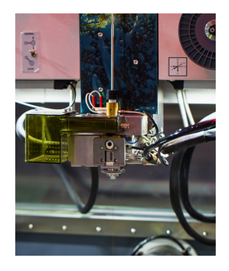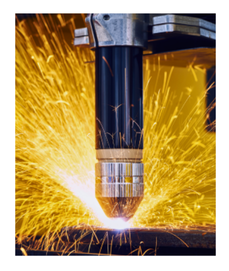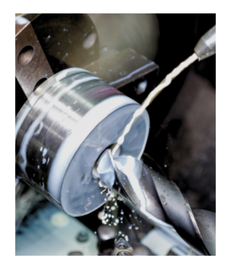Cutting Oils
Categories
- Lubricants Division
- Air Division
- CNC Division
- Pumps Division
- Measuring Devices
- Vacuum Cleaner
- Industrial Chain
- Quick Disconnect Couplings
- Spares
Water-Soluble Cutting Oils
Neat Cutting Oils
Food-Grade Cutting Oils
Biodegradable Oils
EDM Oils
Vanishing Oils etc.
Improved Machining Efficiency: Reduced friction and heat for smoother and more efficient operations.
Extended Tool and Equipment Life: Helps minimize wear and tear, prolonging the lifespan of both tools and machinery.
Enhanced Precision and Surface Finish: Results in superior surface finishes and higher precision in machining.
Reduced Downtime: Less frequent maintenance and breakdowns, leading to increased uptime and productivity.
Eco-Friendly Solutions: Biodegradable oils and other environmentally conscious options are available, ensuring sustainability without compromising performance.
Optimal Performance in Various Environments: Our oils are designed to perform reliably in diverse and demanding machining conditions.
Industry Expertise
High-Quality Products
Timely Delivery
Technical Support & Consultation
Sustainability Focused
Comprehensive Range
High-Quality Cutting Oils to Optimize Machinery Performance and Extend Equipment Life
As a leading industrial lubricant supplier in the UAE, we provide premium-quality cutting oils and lubrication products designed to enhance machinery performance and extend equipment life.
At Petrotek, we specialize in offering a wide range of cutting oils formulated to reduce friction, dissipate heat, and increase tool longevity, ensuring optimal performance for your machinery. Whether you’re in the UAE, GCC, Kuwait, Saudi Arabia, KIZAD, or Bahrain, our cutting oils deliver reliable results across industries.
Types of Cutting Oils:
Benefits of Using Petrotek’s Cutting Oils:
What Sets Petrotek Apart?
Here’s why industries trust us:
- Lubricants Division
- Air Division
- CNC Division
- Pumps Division
- Measuring Devices
- Vacuum Cleaner
- Industrial Chain
- Quick Disconnect Couplings
- Spares
Categories
Frequently asked questions
1 How do I choose the right cutting oil?
Choose the right cutting oil by considering material, speed, and finish. Petrotek, a leading cutting oil supplier in UAE, can offer expert recommendations.
2 Can cutting oils be reused?
Yes, cutting oils can be filtered and reused, but they must be properly maintained to prevent contamination.
3 How often should cutting oil be changed?
The frequency depends on usage and the type of cutting operation. Regular monitoring is recommended to ensure oil effectiveness.
4 Are cutting oils safe for the environment?
Some cutting oils are biodegradable, but proper disposal is necessary to minimize environmental impact.
5 Do I need a specific cutting oil for high-speed machining?
Yes, high-speed machining often requires cutting oils with higher cooling and lubricating properties.








